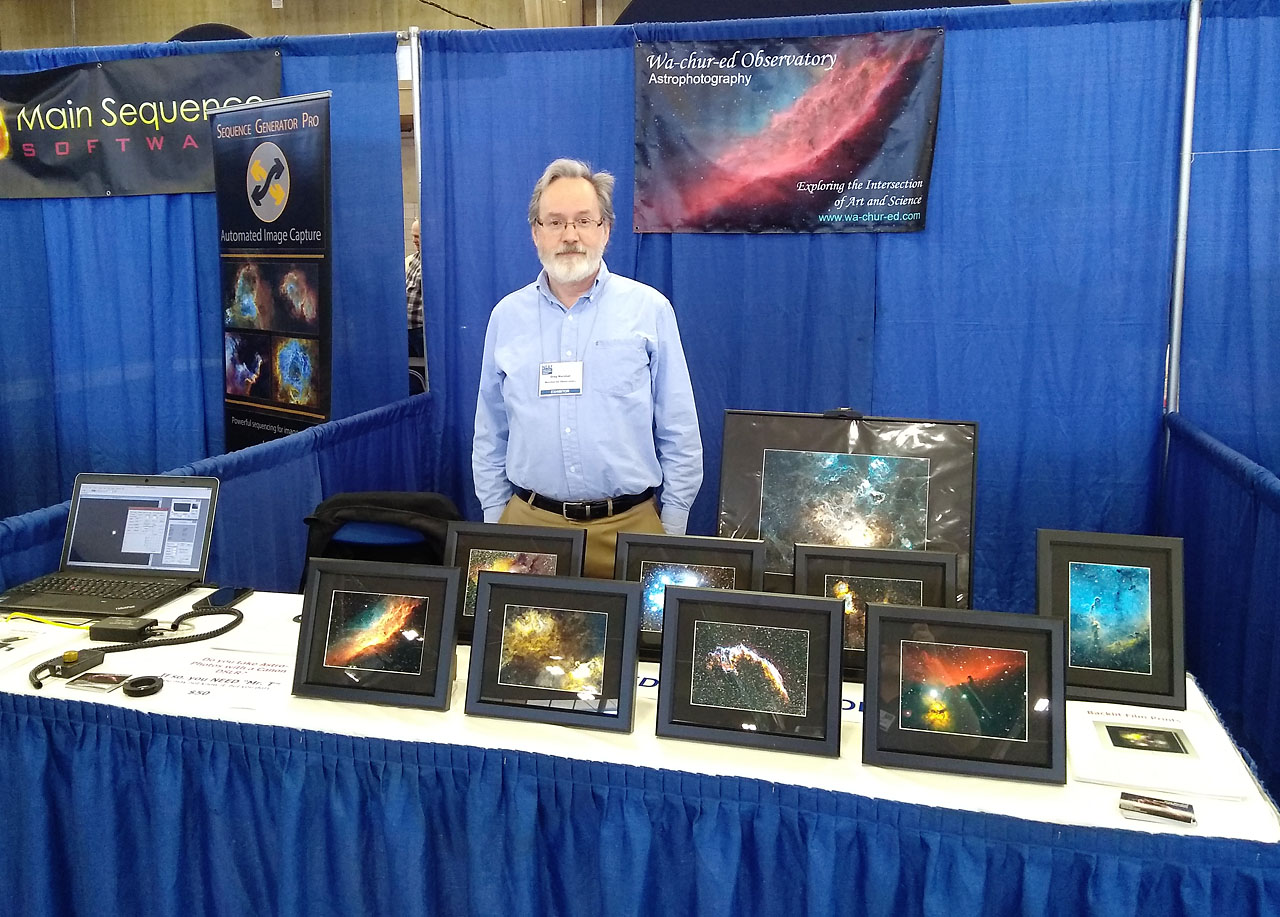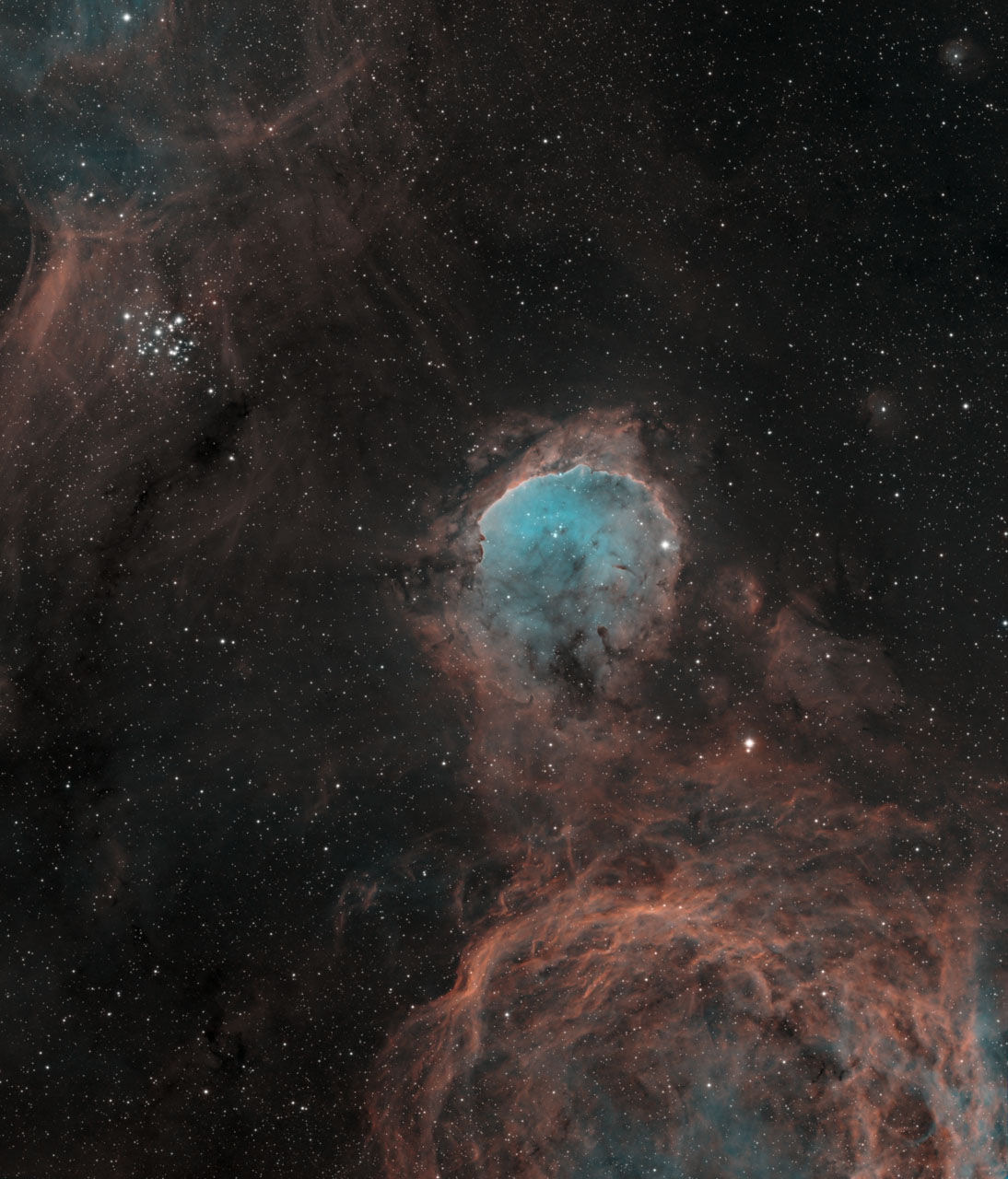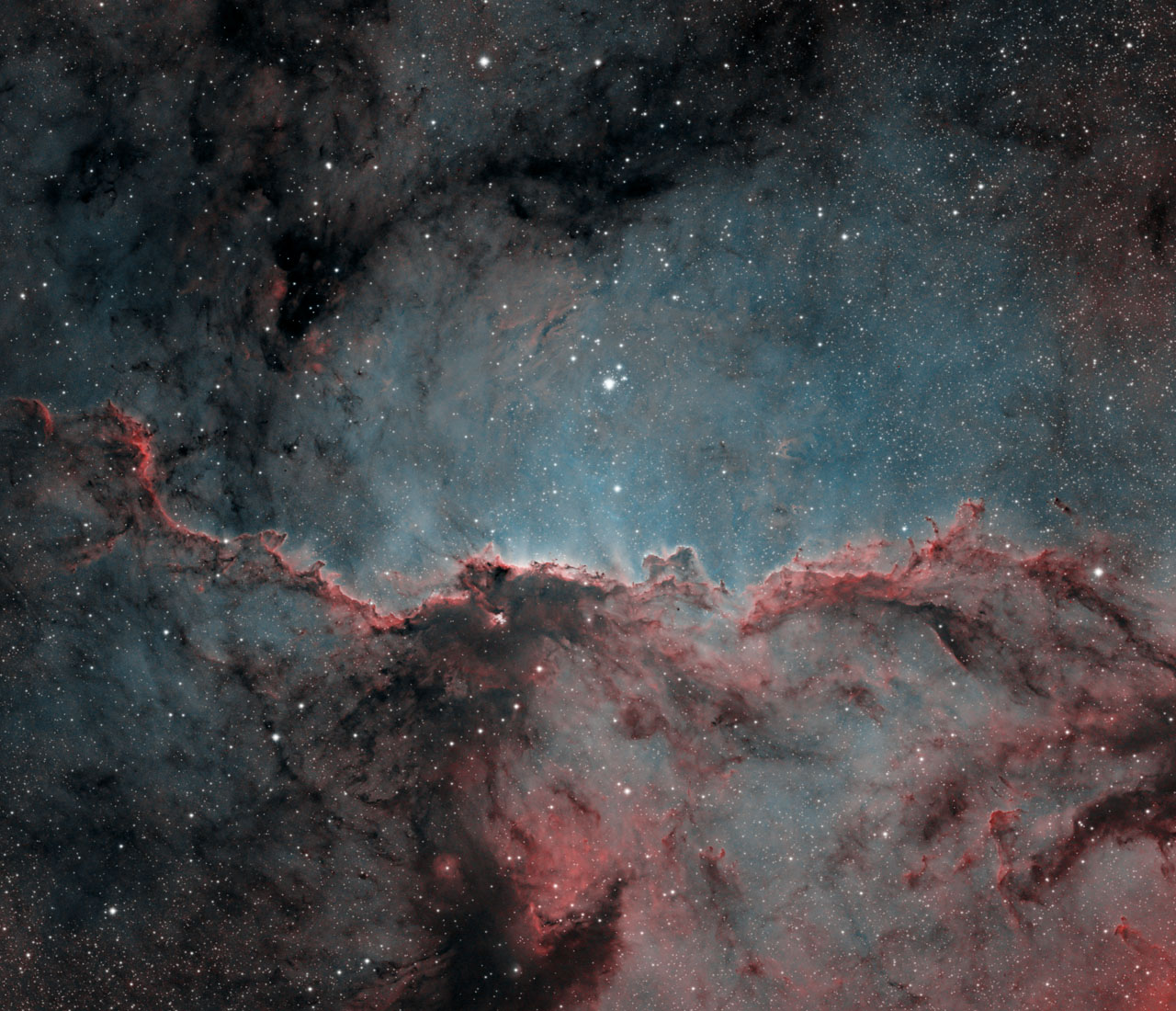NEAF (Northeast Astronomy Forum) was great fun, as I imagine it is every year. As you can see from this photo, I was mainly showing my backlit film prints, and they attracted a lot of attention. At the rate orders are coming in now I’m going to be pretty busy for a while.
I also showed my “Mister T” adapter and the PerfectStar B focus control system. This picture was taken fairly early in the show, and I was using MaxIm DL to show how focus control works. But my booth was right next to Main Sequence Software, who have a competing application, so later (when I remembered that I actually have a copy of their software on the laptop) I switched the demo to use theirs.
It was pretty easy to set up and tear down this booth, but several of the big companies in astronomy had tons of gear, so I felt sorry for them when the show was over and they still had many hours of work to do.
Since my buddy, Mike, was there to help with booth duty, we both got to see all the exhibits, although we didn’t go to any of the talks. So many great telescopes!
Shortly after getting back home the first complete data sets from the observatory in Australia became available. This did not include M16, so I still don’t have a color version of that. This first target is NGC3324 (the bright blue object near the center). The star cluster in the upper left corner is NGC3293. This area is not visible from most northern hemisphere locations. There’s a lot more nebulosity outside the field of view to the lower right that I would have liked to include, but this is the most interesting part. I see a hand offering a precious gift – perhaps a blue gem.
The image contains roughly 10 hours of exposure, using H-alpha, OIII, and SII filters.
Here we have NGC6188, which isn’t quite so far south, but barely peeps above the southern horizon from here in Oregon. To me it seems that there is a very bright star behind that dust cloud in the center, causing streams of light to dance around the edges. That’s almost certainly not what’s really going on here, but it looks neat anyway.
This one is about 15 hours total, using the same narrowband filters.
It’s looking like the 2019 calendar is going to be awesome! It will certainly have a lot of images of objects I’ve never seen before.


